Fighting for rights and equality under the law is never easy and can be life-threatening. Two new exhibits at the Brandywine River Museum of Art focus on two such struggles.
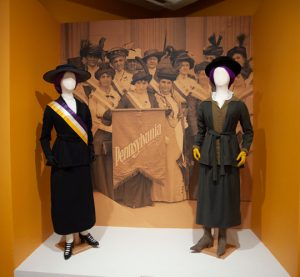
Votes for Women: A Visual History, runs through June 7 and Witness to History: The Selma Photography of Stephen Somerstein runs through June 14.
Amanda Burdan, who curated Votes for Women, is clear on what she hopes visitors will take away after seeing the exhibits.
“How women, how anyone who feels invisible, makes their case, make their cause visible in a way that’s respectful, nonviolent, but also really makes an impact, a visual impact, has visualization of these movements happened,” she said.
Votes for Women includes photographs, movie footage, posters and period clothing from the suffragist movement in the 1910s leading up to the passage of the 19th Amendment in 1920. It’s a commemoration of the 100th anniversary of women getting the right to vote on the federal level. Some states, such as Wyoming, Colorado, Utah and Idaho granted suffrage during the 1800s. But it took a constitutional amendment for suffrage throughout the United States.
The movement for suffrage was omnipresent, Burdan explained, and that the visual went well beyond traditional visual arts such as painting.

“There was a Charlie Chaplin film about suffrage and another feature film [a clip of which is in the exhibit] called “80 Million People Want What?” And they have key aspects of suffrage in their plotline. So, you could go to the movies and see suffrage. You could walk down the street and see suffrage. You could walk by a woman who was wearing a pin that said, ‘Votes for Women’ and you’re seeing suffrage,” Burdan said.
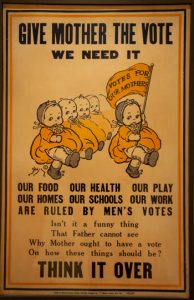
Also included are clothing worn by the suffragists of the day as they marched. Burdan thinks one of the more impressive visuals was when women moved out into the streets to march and protest, and “dressed to express thoughts and feelings.”
There are old pins, hatbands and dresses of the era, and also some of the old capes worn during the various marches, including a march in Washington during the inaugural weekend of 1913 following the election of Woodrow Wilson.
Also included in the exhibit is the recognition of the women of color who were involved in the suffrage movement. The Brandywine commissioned a group of women artists to create a mural illustrating the portraits of those women. The Hidden Figures of the Suffrage Movement include Ethel Cuff Black who founded Delta Sigma Theta, an African American sorority that marched in the 1913 parade in Washington.
Burdan will hold two lectures on her research into the suffragist movement on Wednesday, Feb. 19, at 11 a.m. and 6 p.m. The cost is $15 for members, $20 for others. To register, go here.
There will also be a tea and tour on Feb. 27.
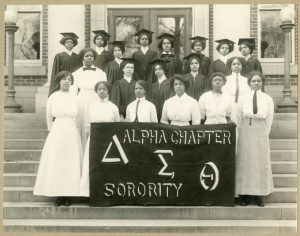
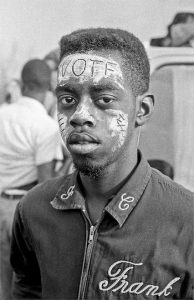
A second exhibit
The concurrent exhibit, Witness to History features the photography of a then 24-year-old student from the Community College of New York, Stephen Somerstein who traveled to Alabama to photograph Dr. Martin Luther King Jr.-led march from Selma to Montgomery in 1965.
Among the 55 images in the exhibit are those of King, Rosa Parks, Joan Baez Bayard Rustin and the multitude of the not so famous who took part in the third of three marches for civil and voting rights following 26-year-old Jimmy Lee Jackson, a church deacon earlier that year.
Somerstein will speak at the museum on Wednesday, April 1 from 6 to 8 p.m. To register for that discussion, go here.
About Rich Schwartzman
Rich Schwartzman has been reporting on events in the greater Chadds Ford area since September 2001 when he became the founding editor of The Chadds Ford Post. In April 2009 he became managing editor of ChaddsFordLive. He is also an award-winning photographer.
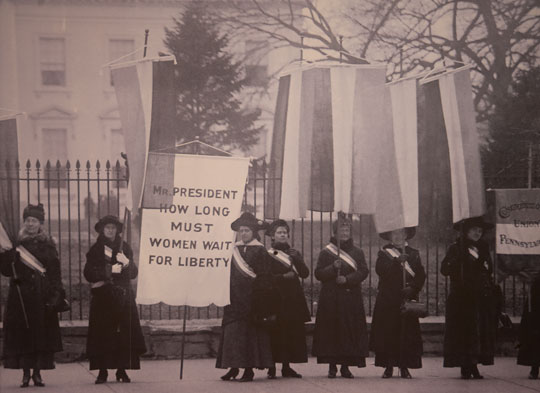


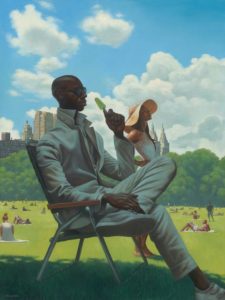

Comments